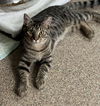Welcome to Pet Rescue By Judy!
401 South Laurel Avenue
Sanford, FL 32771
(407) 302-4497
info@petrescuebyjudy.com
Sasha the Shy Girl's Web Page
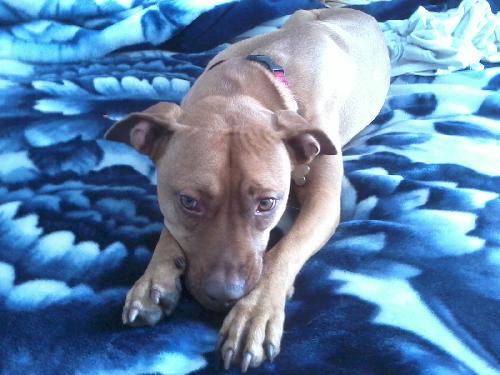
| My Rescue |
| Login to Remember your Favorite Animals and Breeds! |
Name: Sasha the Shy Girl
Status: Adopted!
Adoption Fee: $200
Species: Dog
Breed: Terrier / Rhodesian Ridgeback (short coat)
Learn more about the Rhodesian Ridgeback.Color: Red
Sex: Female (spayed)
Current Size: 42 Pounds
Potential Size: 45 Pounds
General Potential Size: Large
Current Age: 15 Years 11 Months (best estimate)
Activity Level: Moderately Active
Indoor or Outdoor: Indoor Only
Good with Dogs: Yes
Good with Cats: Yes
Good with Kids: Yes
Housetrained: Yes
Microchipped: Yes
Sasha the Shy Girl's sister, Teenie the Ridgeback Puppy (adopted) can also be seen on our website.
Sasha the Shy Girl's sister, Geenah the Ridgeback Puppy (adopted) can also be seen on our website.
Sasha the Shy Girl's sister, Geenah the Ridgeback Puppy (adopted) can also be seen on our website.
Special Needs: Chronic medications for hip and joint problem.
Description:
Sasha is looking for a furever home because her owners were unable to keep her. This beautiful dog has great house manners and is a real lover. she does have a protective streak and will make sure your home is safe.
foster update:
Medical update: Sasha recently went to the vet due to stiffness in the hips and knees. After several x-rays, it was determined that she has something similar to human arthritis. She takes basic anti-inflammatory medications and pain meds to help better manage her joints. If adopted she will need to stay on an over-the-counter joint supplement as well as a daily dose of meticam (anti-inflammatory) for pain.
Sasha and her two sisters, as well as her mother, came from a kill shelter where they time was up. They were adopted as puppies but Sasha is again looking for her furever home.
Sasha is looking for a furever home because her owners were unable to keep her. This beautiful dog has great house manners and is a real lover. she does have a protective streak and will make sure your home is safe.
foster update:
- Sasha is completely house trained; I don’t crate her anymore when I’m not home. She can be completely fine if left alone for 7-8hrs, but would rather be with you.
- She knows basic commands: sit, paw, down, stay, wait, come, no, and her name. She also knows, “Bed” if I point at her bed, she goes and stays in there until told otherwise. “Go night-night” used to mean she went into her crate, but now she sleeps with me, so she goes on my bed.
- She is now completely fine with my cats and is getting used to my roommates’. But we are no longer afraid that she will hurt them. As I mentioned above, I leave her out all day, free to roam amongst the cats with no problems.
- Sasha loves to swim and will jump in the lake/creek/river after a stick and will bring it back. She's an excellent swimmer and always has a blast in the water.
- She does have bad joints at her hips and knees. She takes 1 Glucosamine pill in the morning with her wet food and 1.0 ml of inflammatory medication, which I squirt on her food at night. She eats both meds with no trouble. I haven’t had to give her any pain med at all for a while now.
- I feed her 2 times per day. First thing in the morning (around 7-ish am), I give her ½ can of Pedigree chunks (in which I put her Glucosamine pill for her joints) and 1 scoop of Pedigree dry food (the kind for joint health) . After our morning walk, I give her a Greenie dental treat. At night, around 5-ish, ½ -3/4 of a can of wet food with her anti-inflammatory liquid on her food and 1 scoop of dry food. She also gets plenty of treats throughout the day.
- We go on 4-5 daily walks around our neighborhood, as the vet mentioned that walking is great for her joints (and so is swimming).
- She is very playful and loves to run after tennis balls and catch them in her mouth if you throw them or bounce them. She loves to run around and play with other dogs, but gets tired/sore more rapidly due to her bad joints.
- When in our home, she greets everyone she knows with a wagging tail, but is still cautious if it’s a random person (i.e.: delivery man or repair man). She is more scared than anything. If she knows you, she will come greet you at the door, tail wagging to the extreme, and will want (demand!) some loving.
- She is very protective of her home and will let you know when someone is at the door or around your house.
- She walks well on a leash after she has become familiar with her surroundings. She is still frightful of any sudden noises or movements around and will want to stop and go back home right away. You just need to pull her and keep walking forward and she will get over it and resume the walk.
- She really is a great dog and deserving of a great home. She is a huge lover and cuddler. She follows me everywhere and is always happy to see me.
Medical update: Sasha recently went to the vet due to stiffness in the hips and knees. After several x-rays, it was determined that she has something similar to human arthritis. She takes basic anti-inflammatory medications and pain meds to help better manage her joints. If adopted she will need to stay on an over-the-counter joint supplement as well as a daily dose of meticam (anti-inflammatory) for pain.
According to www.dogbreedinfo.com, the Rhodesian Ridgeback, originally from Zimbabwe, resulted from crosses between ridgebacked dogs originally kept by native tribes in South Africa and other breeds, such as the Khoikhoi dog, Mastiff, Deerhound and some breeds that are not known. It was the native Khoikhoi dog that gave the Ridgeback his distinctive reverse-hair coat marking, a dominant characteristic that today makes him unique among dog breeds. The ridgebacks were imported by Boer settlers in the 16th and 17th centuries. Its standard, fixed in Rhodesia, dates from 1922. The Rhodesian Ridgeback was used for many purposes. This impressive, protective hound could hunt game, retrieve, take care of children, and guard property. South African hunters discovered that the Ridgeback, used in packs, was very effective against lions, hence the breed's other name, the African Lion Hound. The Rhodesian Ridgeback is well adapted to the harsh African environment. He can withstand very high temperatures and the damp cold of night. It is insensitive to insect bites and can go without food and water for over 24 hours. The Rhodesian Ridgeback is ferocious in the hunt, but in the home it is a calm, gentle, obedient, good dog. Good-natured, but some do not do well with children because they do not want to be pestered or played with roughly. They are intelligent, cunning but straight-forward dogs that are loyal to the family, have something of a mind of their own, are brave, vigilant, reserved toward strangers, and possess considerable stamina. This breed needs thorough obedience training, socialization with people and other dogs, and firm owner leadership to become the excellent companion he can be. Ridgebacks react best to an extremely consistent and equable approach to training. They are intelligent and learn quickly, but they are also strong and a bit stubborn. Training should be gentle and start young while the dog is still small enough to manage. They are also very good watch dogs, but not suggested for guard dogs. They are very protective of owners! This has to be addressed during their early training. This breed can be more destructive than a Lab if left unsupervised! Do not overfeed this breed. Males may be combative with other dogs. Provided this dog meets cats and other pets when it is young, any potential problem will be prevented. Ridgebacks make excellent jogging companions. They have a life expectancy of about 10-12 years.
Other Pictures of Sasha the Shy Girl (click to see larger version):
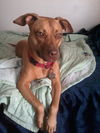 51k |
 34.2k |
 22k |
 31.5k |
 22k |
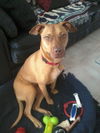 36.3k |
 20.9k |
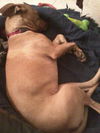 43k |
 20.9k |
 17.7k |
 24k |
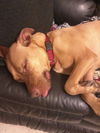 38.7k |
 25.5k |
 22.8k |
 38.3k |
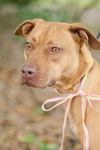 39.4k |
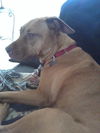 33.9k |
 24.7k |
 32.7k |
 37.7k |
 26.4k |
 34k |
 26k |
 47k |
 23.4k |
 45.8k |
 23.5k |
 22.2k |
 45.7k |
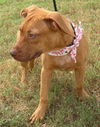 99k |
 38.6k |
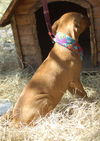 77.9k |
Copyright © Pet Rescue by Judy
